
George Meredith was an English novelist and poet of the Victorian era. At first, his focus was poetry, influenced by John Keats among others, but Meredith gradually established a reputation as a novelist. The Ordeal of Richard Feverel (1859) briefly scandalised Victorian literary circles. Of his later novels, the most enduring is The Egoist (1879), though in his lifetime his greatest success was Diana of the Crossways (1885). His novels were innovative in their attention to characters' psychology, and also portrayed social change. His style, in both poetry and prose, was noted for its syntactic complexity; Oscar Wilde likened it to "chaos illumined by brilliant flashes of lightning". Meredith was an encourager of other novelists, as well as an influence on them; among those to benefit were Robert Louis Stevenson and George Gissing. Meredith was nominated for the Nobel Prize in Literature seven times.
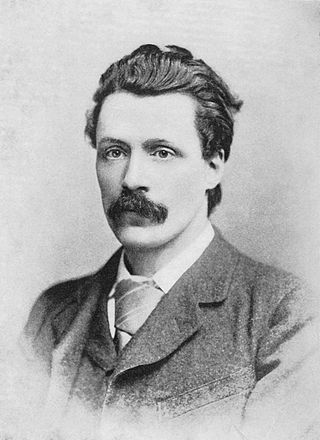
George Robert Gissing was an English novelist, who published 23 novels between 1880 and 1903. In the 1890s he was considered one of the three greatest novelists in England, and by the 1940s he had been recognised as a literary genius. Gissing's best-known works have reappeared in modern editions. They include The Nether World (1889), New Grub Street (1891) and The Odd Women (1893). He retains a small but devoted group of followers.
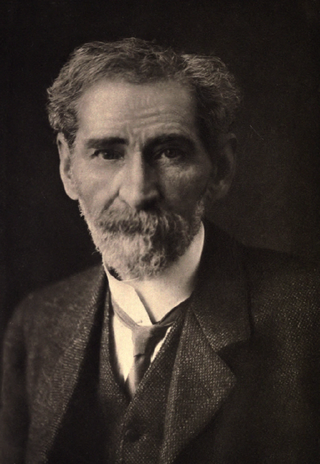
William Henry Hudson, known in Argentina as Guillermo Enrique Hudson, was an Anglo-Argentine author, naturalist and ornithologist.

Sir Walter Besant was an English novelist and historian. William Henry Besant was his brother, and another brother, Frank, was the husband of Annie Besant.
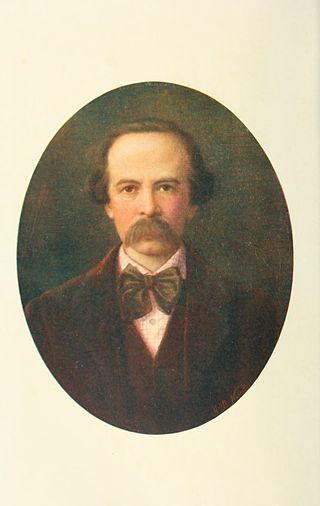
Theodore Watts-Dunton, from St Ives, Huntingdonshire, was an English poetry critic with major periodicals, and himself a poet. He is remembered particularly as the friend and minder of Algernon Charles Swinburne, whom he rescued from alcoholism and drug use and persuaded to continue writing.
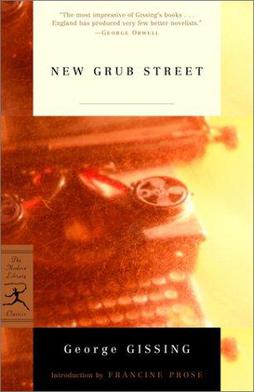
New Grub Street is a British novel by George Gissing published in 1891, which is set in the literary and journalistic circles of 1880s London. The story deals with the literary world that Gissing himself had experienced. Its title refers to the London street, Grub Street, which in the 18th century became synonymous with hack literature, although by Gissing's time, Grub Street itself no longer existed. Gissing revised and shortened the novel for a French edition of 1901.
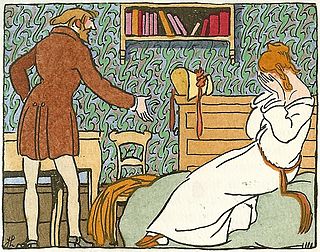
Scenes of Bohemian Life is a work by Henri Murger, published in 1851. Although it is commonly called a novel, it does not follow standard novel form. Rather, it is a collection of loosely related stories, all set in the Latin Quarter of Paris in the 1840s, romanticizing bohemian life in a playful way. Most of the stories were originally published individually in a local literary magazine, Le Corsaire. Many of them were semi-autobiographical, featuring characters based on actual individuals who would have been familiar to some of the magazine's readers.
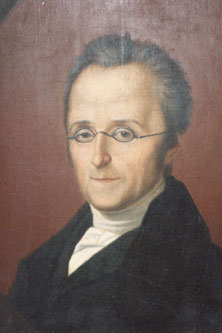
Silvio Pellico was an Italian writer, poet, dramatist and patriot active in the Italian unification.

The Nether World (1889) is a novel written by the English author George Gissing. The plot concerns several poor families living in the slums of 19th-century London. Rich in naturalistic detail, the novel concentrates on the individual problems and hardships which result from the typical shortages experienced by the lower classes—want of money, employment and decent living conditions. The Nether World is pessimistic and concerns exclusively the lives of poor people: there is no juxtaposition with the world of the rich.
Eve's Ransom is a novel by George Gissing, first published in 1895 as a serialisation in the Illustrated London News. It features the story of a mechanical draughtsman named Maurice Hilliard, who comes into some money, which enables him to live without working. As part of his resulting travels, he meets and falls in love with Eve Madeley, a book keeper.
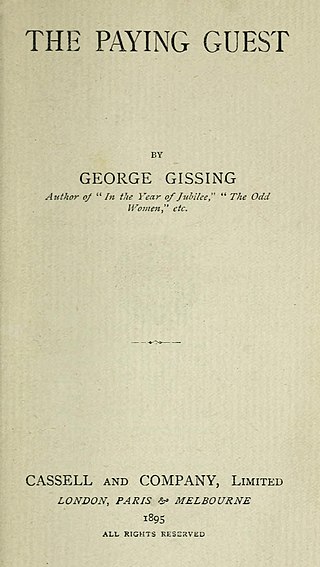
The Paying Guest is a satirical novella by George Gissing, first published in 1895 by Cassell, as part of their Pocket Library series. It recounts the experiences of the Mumfords, a middle-class family who invite a "paying guest" into their home to supplement their income. Written in an unusually comic tone compared with Gissing's earlier works, The Paying Guest was generally received well by critics. Gissing himself, however, was not satisfied with the work.
Algernon Fred Gissing was an English novelist and the younger brother of George Gissing. He wrote 25 novels, two collections of short stories and several pieces of travel writing. He died from heart disease.

A Life's Morning is a novel by English author George Gissing. Although written in the space of three months during 1886 it was first published, in serial form, beginning January 1888, in Cornhill Magazine before being released by Smith, Elder & Co. as a novel.

Demos: A Story of English Socialism is a novel by the English author George Gissing. It is a story of the moral and intellectual corruption of a working-class Socialist who inherits a fortune. It was written between late 1885 and March 1886 and first published in April 1886 by Smith, Elder & Co.

The Unclassed is a novel by the English author George Gissing. It was written during 1883 but revised, at the publisher's insistence, in February 1884 and shortly before publication.
The Gissing family of Great Britain included several noted writers, Olympic competitors, and teachers.

Charles Francis Keary was an English scholar and historian. His later work as a novelist influenced the modernist writer James Joyce. However, the English novelist George Gissing read four of Keary's works, including three novels, in the first 31 days of 1896, and found the novel Herbert Vanlennert, "a long, conscientious, uninspired book".
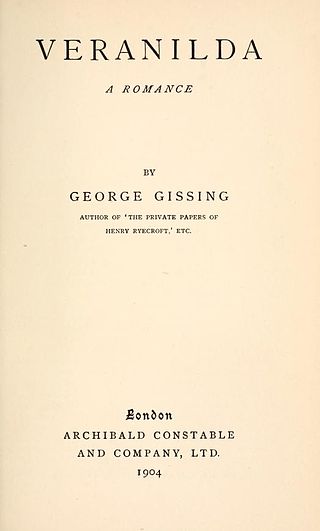
Veranilda: A Romance is a posthumous novel by English author George Gissing. The book was left incomplete at the time of Gissing's death and it was first published in 1904 by Archibald Constable and Company.
The Speaker was a weekly review of politics, literature, science and the arts published in London from 1890 to 1907. A total 895 issues were published.
Pierre Coustillas was a French literary scholar and emeritus professor of English at the University of Lille. He was a specialist in the work of George Gissing.















